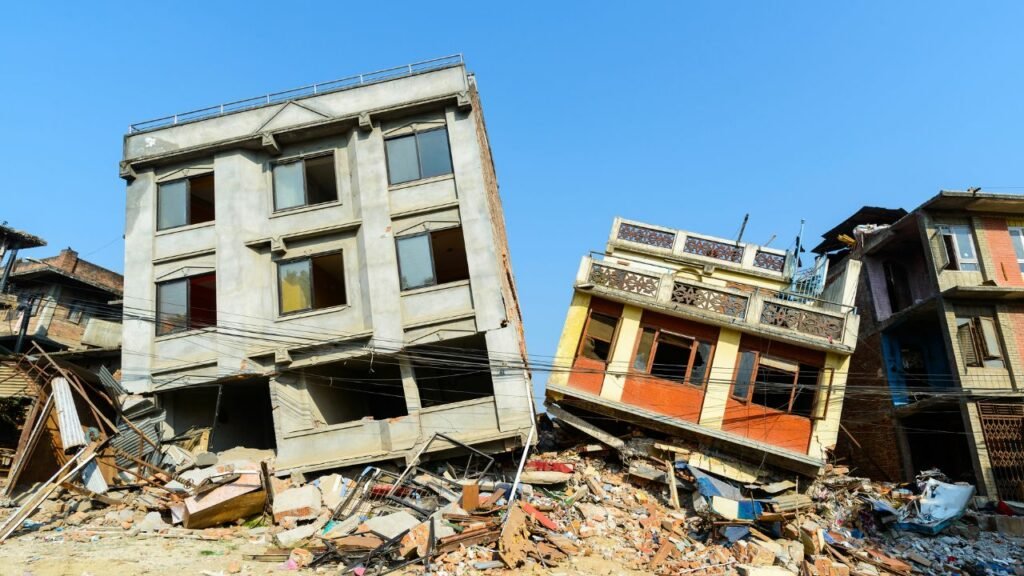One of the scariest feelings in the world is feeling the ground shake beneath your feet. The sheer panic in that moment is enough to traumatize you for the rest of your life. You hear the walls creak, the windows rattle, but somehow, the building keeps standing and everyone inside stays safe. How’s that possible?
It’s not sheer luck, if that’s what you were thinking. It’s science and engineering. Earthquakes are unpredictable, and while we unfortunately can’t stop them, what we can do is make sure our buildings and communities stay as safe as possible. Violent earthquakes are no joke, but thanks to building codes and advanced techniques, our buildings are now more resilient than ever before.

Let’s get into some science behind buildings that can handle what nature throws their way.
What Happens to Buildings During Earthquakes
When an earthquake hits, the ground below the building moves suddenly and unpredictably. This causes forces that travel in waves – vertical motion, which pushes and pulls the building up and down, and lateral motion, which shifts the building from side to side. When you combine these forces, what you get is an incredible amount of stress that’s placed on the structure.
As the ground shakes, the foundation can shift, which causes the walls, beams, and support structures to crack. If the earthquake is very strong, it can make the building completely collapse or it can cause the foundation to fail.
That’s why it’s so important to understand how these forces interact with the structure itself. If you can understand it, you have the chance to create a building that can resist earthquakes.
Building Codes and Why They’re Important for Safety
Building codes are what makes sure that structures stay safe during earthquakes. Engineers work together with the government to create and enforce these rules, and without the codes, a lot of buildings would be extremely unsafe.
Here’s a closer look at some facts about the codes.
1. Requirements for Structural Load and Stability
For building codes that focus on earthquakes, one of the most important things is how to manage the forces that buildings experience when the ground starts to shake. Codes define how structures have to handle vertical loads (like their own weight) and lateral forces (which are caused by the ground shaking).
These requirements make sure that even if it’s under extreme stress, the building will stay safe. Engineers use the codes as guides to help them create designs that are able to distribute the forces evenly. This prevents weak points that can lead to the structure failing.
2. Standards for the Materials
Materials used in construction are another critical aspect of the building codes. Of course, materials have to be strong to resist seismic forces, but they also have to be flexible enough to absorb energy without falling apart.
For buildings, contractors have to use materials like reinforced concrete and structural steel, both of which are extensively tested to make sure they can handle the stress. Standards for materials help builders choose materials that will make the structure more durable and resilient during earthquakes.
3. Guidelines for Designing Foundations
A building can’t be stable without a proper foundation, and just imagine what would happen during an earthquake.
These codes require the soil to be tested to see whether the ground can support the structure or not. The testing also helps spot any potential risks, like liquefaction. Proper anchoring is also part of the codes; it secures the base of the building and prevents it from shifting and sinking during an earthquake.
4. How Building Codes Changed Over Time
Building codes change as we learn more about earthquakes and new building technologies, but there are also some historic events that have prompted some major changes to be made to the regulations.
For example, the 1994 Northridge earthquake in California revealed that there were flaws in steel frame buildings, which then resulted in stricter requirements for the buildings’ design and retrofitting.
This process of learning and adapting helps building codes stay relevant.
5. Differences in Building Codes Across States
There are national guidelines in place, like those from the International Building Code (IBC), and they’re a base. All states have to comply with these regulations. However, each state has tweaked these rules to their risks of earthquakes.
For example, in Michigan, where earthquakes happen rarely, the seismic requirements are not as strict. Naturally, they still have to make the buildings safe, but the rules just aren’t as stringent. This is subject to change, though, so it’s important to stay up to date whether you’re an engineer, a builder, or an inspector. Continuing education for building inspectors in Michigan is just as important as it would be if they were in California.
And speaking of California, they have some of the strictest building codes in the country because earthquakes happen frequently.
Conclusion
Earthquakes are some of the most horrific reminders of how powerful nature is and how incapable we are in truly defending ourselves against it. The good news is that we have come up with ways to stay safer, and we keep learning and adapting to whatever nature puts in our path.
Our innovations protect our structures and, in the end, our lives. We may never be 100% safe, but we’ll keep trying, and as long as we stick to regulations, we’ll know we’re doing our best.

